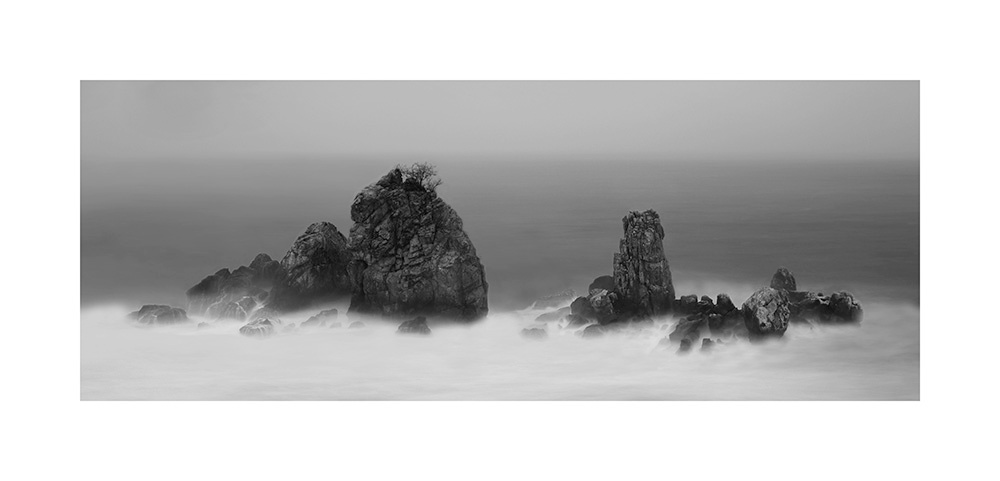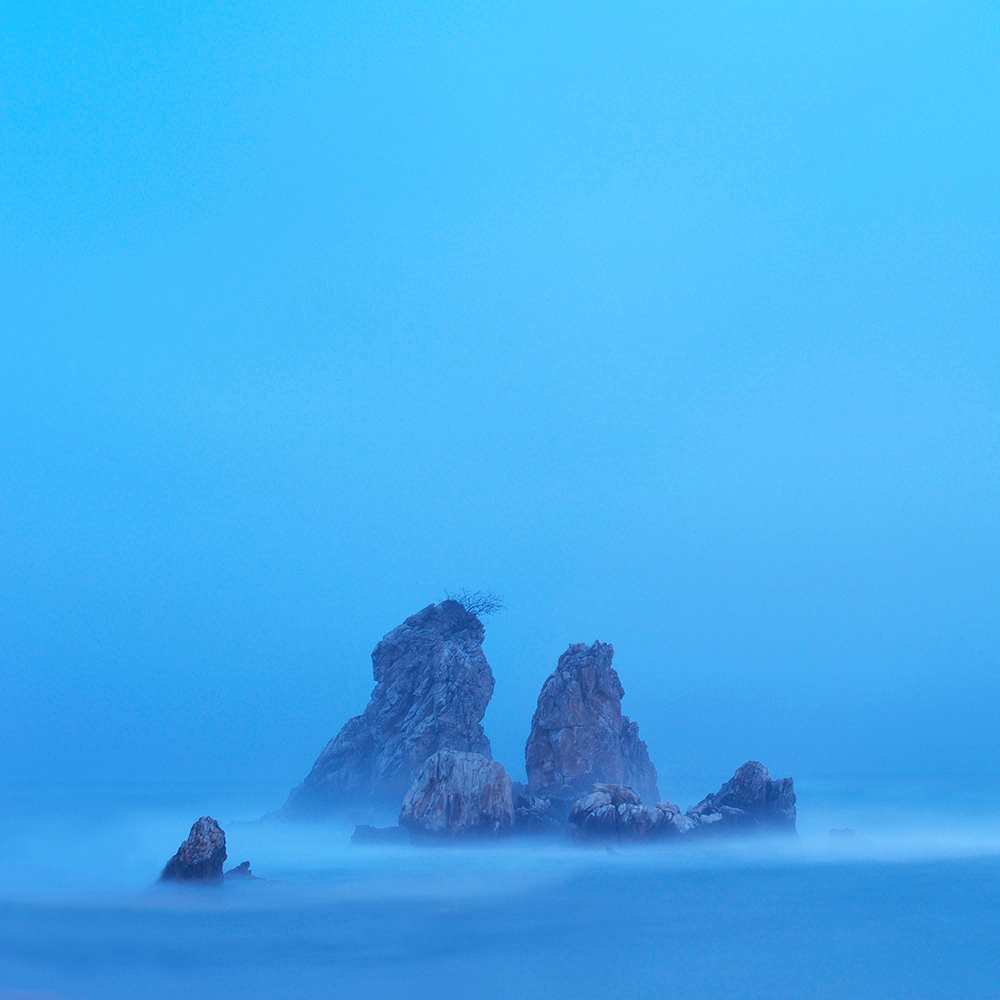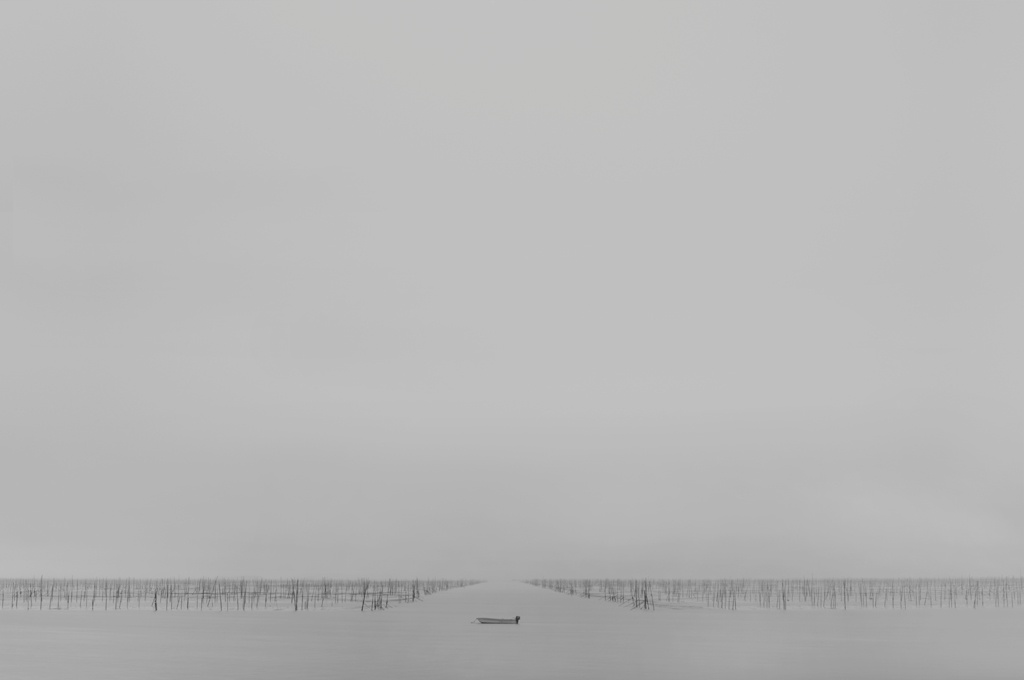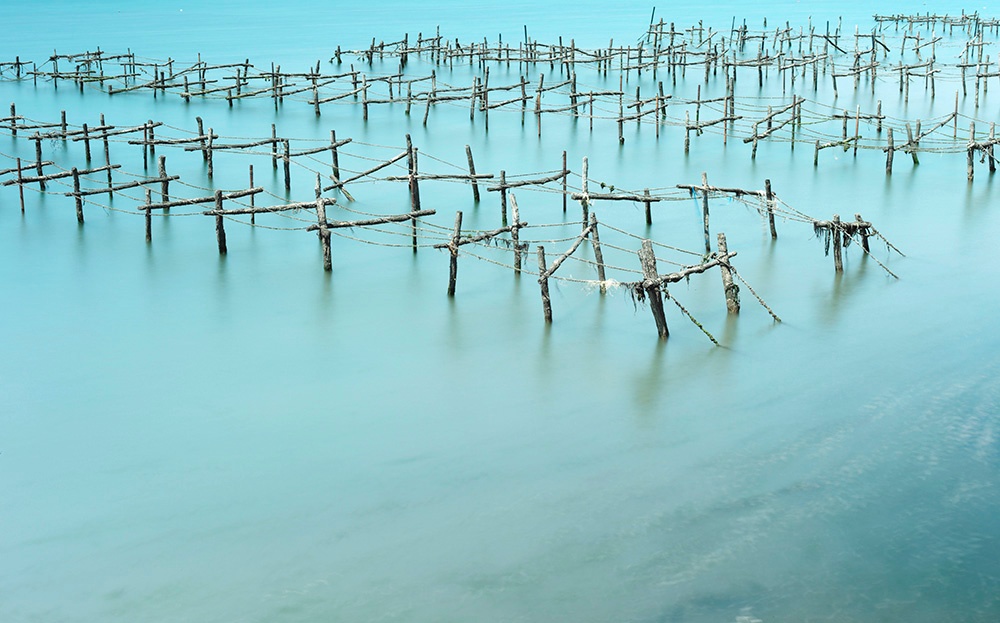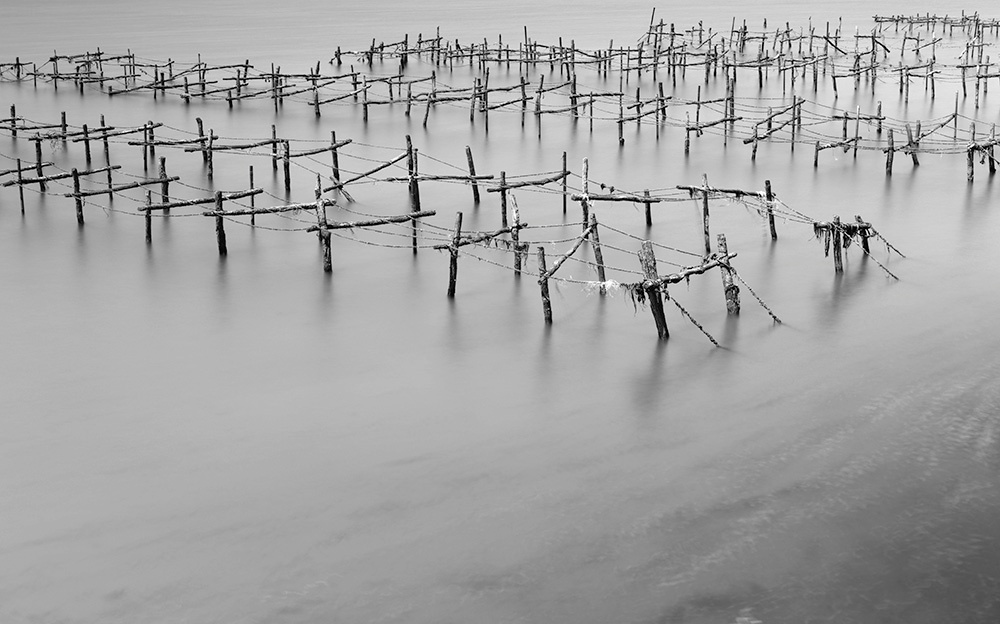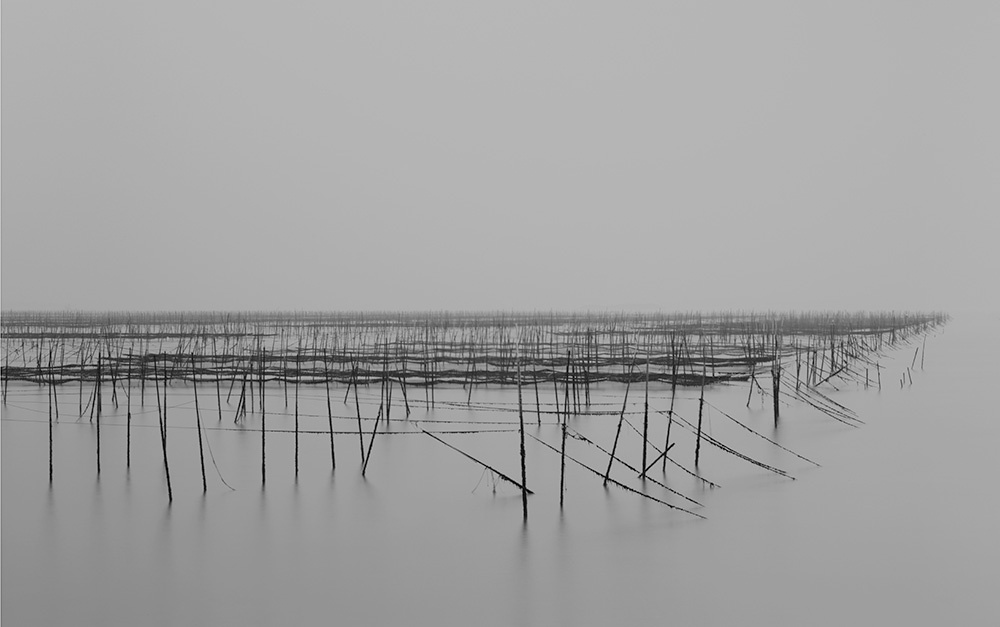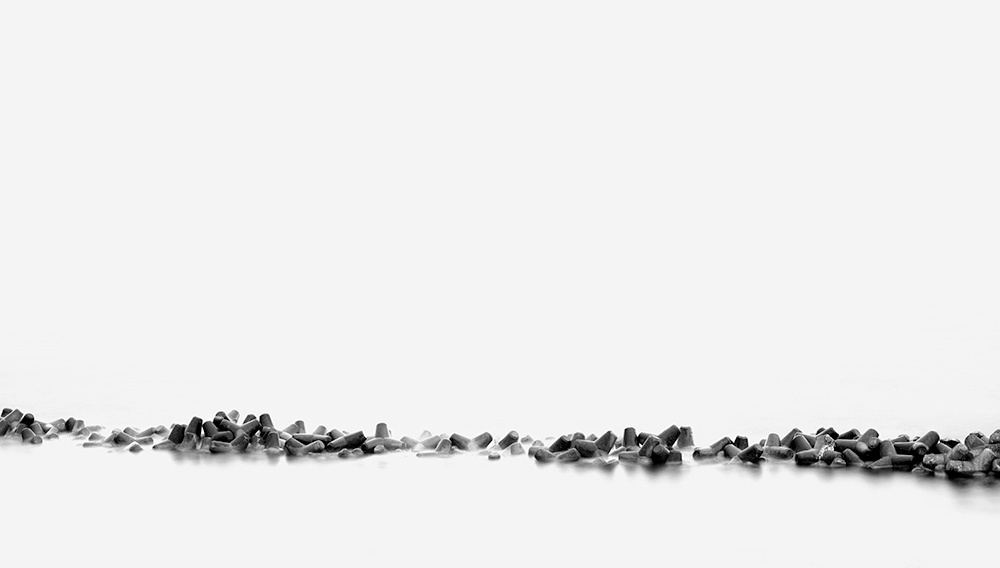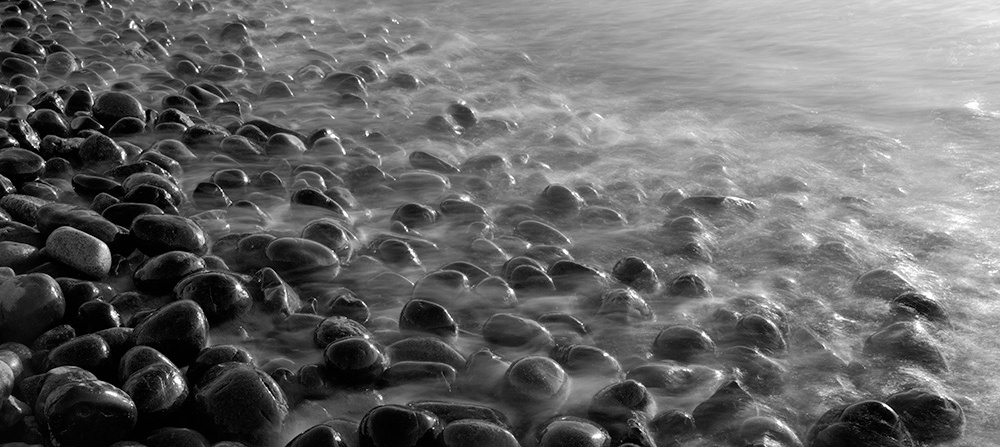The Sea Finally Draws near with Solace: Regarding Photos of Youngjae Kim
Youngjune Lee, Photography Critic
Sea has a captivating power that draws people. It might be because the sea is where humanity was born in the beginning. But the sea in our current time is a place of death. One only faces death if he enters the sea to return to where he is originated. Sea seems to be tranquil to the eyes of people who go there for sea bathing, but it is a tough place for those who sail or work. Thus, to be captivated by the sea and make photographic images of it is embedded with antinomy. It might be that humans are more attracted to the sea since it pushes humans away. The reason people do not recognize the danger of the sea and be attracted to it is that they only encounter it as an image. Hence, to take photos of the sea means to challenge such limit.
The sea depicted by Youngjae Kim varies with a range of seasons and conditions. The sea with snow is filled with tranquility, while the sea filled with waves is full of passion. Kim’s photography focuses on the different faces of the sea that is ever changing its mask. To adapt to the sea, one might also have to possess various characters and emotions as those of the sea. To the artist who has been working on a variety of subjects for a long time, the sea resembles a birthplace that one goes back after all his years. However, one cannot produce excellent photography by getting closer to the direct nature of the sea. What is important is to convey the sea in the photographic frame and generate certain formality. This is because a proper formulation of formality is what constitutes art, regardless of any ardent content. In Kim’s work, he employs the format of black and white photography to simplify the face of the sea that is imbued with
too much diversity. But the sea in Kim’s photography is not naïve. It comes as surging energy from its rich discourse and quality of sensations. To deliver such characteristics through photography is not just about making images but to make one’s life more fertile with the energy of the sea.
Although water might be inanimate object, waves move themselves as if they were alive. And there are two kinds of waves. There are small waves that we see in the seashore. Huge waves or swells, with longer cycle of emergence, can be seen in the ocean. While the small waves are created by wind, swells are generated by accumulation of energy in the water of the ocean. Such energy is what breaks big ship apart. Since the length of its cycle is as wide as a few hundred meters, a long ship is torn apart once it is put on top of a swell. Though water itself is mild and soft, it can crush whatever object in the world when it is put together in a huge quantity. In the end, what draws a photographer to the sea is the very vitality of such energy. The sea without such vitality is rather strange. I have once encountered an extremely quiet sea while sailing through the Indian Ocean. On that day without any wind, the sea was as calm and silent
as a mirror. While a small pond has wavelets made by wind, but the sea at the time was without any kind of movement. Hence, it was overtly strange.
It was as if I was watching a gigantic corpse. To see the living sea in motion is not merely to see a huge quantity of water. It is to get the energy of life by watching the vitality of the sea. Youngjae Kim keeps such energy of life of the sea and conveys it through the means of photography.
The energy of the sea is primal, bet that does not make its photographic images primal, too. In the photography created by Youngjae Kim, the sea is in a silent sleep. The artist governs the sea with the power of photography. Taken by a long-exposure, the sea resembles a faint mist while snowflakes becomes beautiful pollen. Though snow is not a big threat in the sea, it might have been felt as dangerous if one encountered snow in the middle of mountains. We are able to observe nature thanks to photography. There lies an antinomy, however. In its role, photography plays a role of bridge or medium that connects nature and the human eyes. However, it is the very photography that blocks our eyes towards the sea. It is not a complete blockage; photography imposes certain filters in what we see. However clear one makes his lenses, the quality and characteristics of the lens and camera prevent us from experiencing the sea as itself. Moreover, the nature of photography itself is what prevents us from such experience. Yet, humans always have been able to experience nature through such media. The
nature and fate of media are to connect and disconnect and the same time, and that is where the fun of photography exists. Photography is not a mirror that reflects its subject. Photography is something that resembles a mesh put in front of it subject. We can peep into the net. We cannot see well, but that makes
the subject look more desirable. To see photography is thus a delicate visual game where one sees subject and a net that covers the subject at the same time. In the same vein, the sea seen through the filter of photography and the sea seen by one’s eye are different. However lively the energy of the nature is, it is a bit difficult to stand when it is put directly towards oneself. It is the same as one should cook a fresh fish before he eats it. Photography then becomes a good measure to deal with nature. It is so because photography lets one to put certain distance between himself and the nature through the power of the camera lens.
And there are islands in Kim’s photography. The islands, which look like small dots, even fell a little pathetic. In fact, they look as if they are afloat since we sympathize them with our existential quality of floating all the time. We don’t use the expression ‘remote islands’ much in these days, but the expression was not rare until a few years ago. While many islands are lonely, away from the lands and the flamboyant civilization, I think it is too much to use the word ‘remote’ in describing islands. It might be because the islands were so barren in the old days. The reason we do not use the expression ‘remote islands’ nowadays in part because of the recognition in not discriminating local provinces. Moreover, it might also be because of the diminishing gap between islands and the land due to development of communication technology such as the internet.
However, the island in Youngjae Kim’s photography seem to be remote islands. They look like remote islands not in a bad sense but in a way of the emotion they draw. They are remote islands that make one think that it might be possible to cleanse the agony of one’s mind from the city. And it is also true that
the image of islands were identified with paradise from a certain point, which might make the image of islands feel more afloat on the ocean. Islands started to be depicted by any of us. Then, the islands appear as beautiful places to us. Remote islands stop being remote islands. And they merge in the photography by Youngjae Kim. The most proper role of photography is to put a certain subject onto the horizon of recognition, and Kim’s photography enables such role of photography with a perspective that is moderate and controlled.
Through Kim’s photography, we come to possess a new awareness on the sea, which is that the sea is not only made of water but it exists within an appropriate relationship between the land. And there should be light. In fact, light is what photographers look for. Even though a photographer explores all the shores of the sea to find his own image of the sea, it is to no avail if he fails to find proper light. The long and difficult examination of light elevates Kim’s photography to the level of almost sacred stature. Light is the ultimate interest of a photographer. The sea has its own unique condition of light. It is different from the one in the land, and it is much different from the one in the city. What makes our skin become dark in the summer around the sea is the unique light of the place. Yet, it is not always intense. Youngjae Kim tames it in his photography. He gently suppresses it, trying to make it not burn everything on the earth in a violent manner. As a composer sing about the earth through a melody, Kim sings about the sea through light. Therefore, the sea in Kim’s photography is the sea that no one has ever seen, which is the very sea discovered by the artist for the first time. The unique function and power of photography is to look thing
that have been seen by countless people anew. Not anyone can employ such a function. It can be performed only by those who adapt their eyes to the eyes of photography and who discover light that works together with their subjects. And that is what makes the sea in Kim’s photography unique and
appropriate. The nature of the sea is alive within a comfortable glance of Kim’s photography. It is a state that is not entirely depicting the sea nor entirely being a photographic image. When the two encounter with a proper mixture, one gets comfortable as he sees them. It is because he encounters a sea that he can reflect on, which is not the violent sea that engulfs everything with fierce energy nor the se that is stained with blood and sweat. Youngjae Kim has finally tamed the sea photography. Photography is thus a great form of art.


